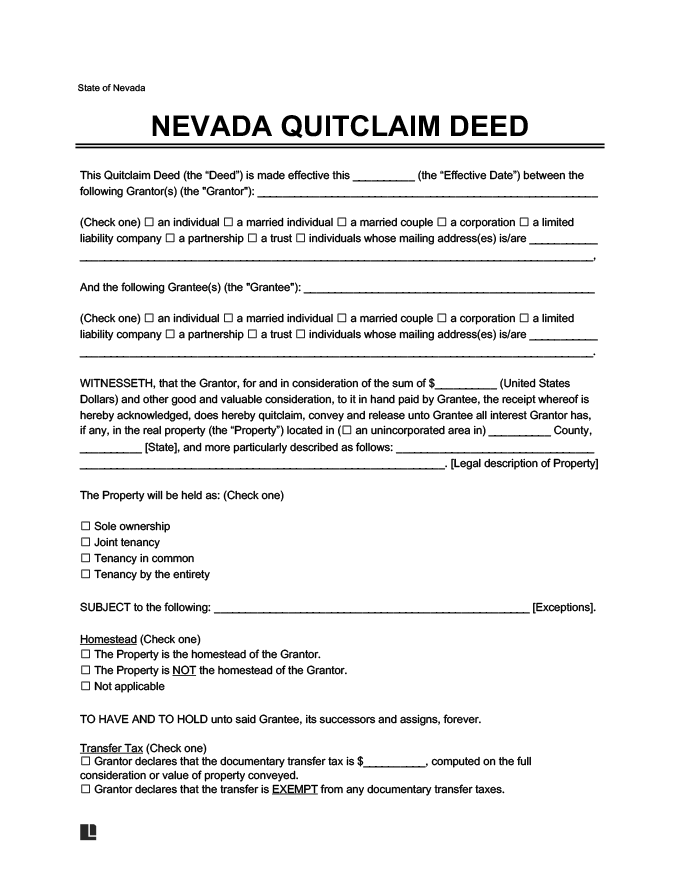Filing a quitclaim deed in Nevada can help you facilitate a smooth transfer of real estate, provided you meet Nevada’s statutory requirements. Follow these steps to file a quitclaim deed in Nevada:
Step 1 – Procure the Property Deed
The original title to the property has important information you need to file your quitclaim deed, including the owner’s name, legal property description, and assessor’s parcel number. If you do not have the property deed, contact the county recorder’s office in the county where the property is located.
Step 2 – Locate the Property’s Legal Description
Your quitclaim deed must include a legal description of the property, per Nev. Rev. Stat. § 111.312. Property descriptions may include the assessor’s parcel number, but the parcel number cannot be the only method of identification. The description may also include a street address, plot number, and metes and bounds.
For a quitclaim deed, you can usually pull the legal description from the existing deed. if you must create a new legal description, you must provide the name and address of the person who created the description.
Step 3 – Fill Out the Quitclaim Deed Form
Download a fillable Nevada quitclaim deed form. You can use the form to meet formatting and content requirements without having to start from scratch. Enter details about the property transfer in accordance with Nev. Rev. Stat. § 247.110.
Per Nev. Rev. Stat. § 239B.030, personal information such as social security numbers should be redacted unless they are specifically required by statute.
Step 4 – Sign the Quitclaim Deed Before a Notary
According to Nev. Rev. Stat. § 111.105 the quitclaim deed must be signed by the property owner, or grantor. This includes both spouses if the property is co-owned by a married couple, per Nev. Rev. Stat. § 123.230. Every signature on the quitclaim deed must have the signer’s name printed or typed underneath the original signature, per Nev. Rev. Stat. § 247.190.
The signatures must be notarized, consistent with Nev. Rev. Stat. §§ 111.240, 240.161, and 240.169. Nev. Rev. Stat. §§ 240.1655, 240.166, and 111.310 provide further guidance for notarizing real estate documents, including certification, stamp requirements, and acknowledgment language.
Step 5 – Complete the Declaration of Value Form
Complete a declaration of value form [1], per Nev. Rev. Stat. § 375.060. The official form can be found on the Department of Taxation’s website [2] or you can request it from your county recorder’s office.
Step 6: File the Deed With the County Recorder’s Office
Submit your Nevada quitclaim deed to the county recorder’s office in the county where the property is located, per Nev. Rev. Stat. § 111.312. You can find a list of all county recorders in Nevada on the Nevada Secretary of State website [3].
